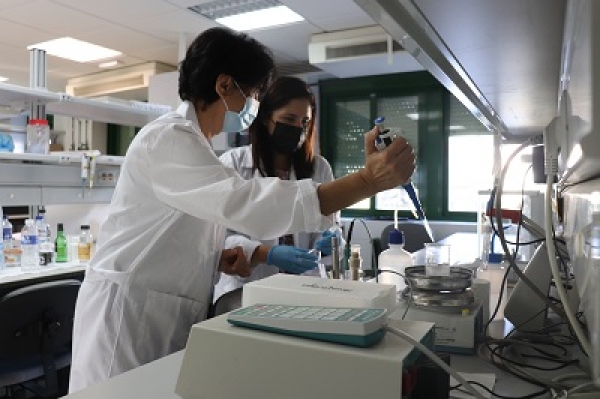Petroleum solvents contain large amounts of volatile polluting compounds and account for a significant portion of industrial emissions worldwide. Hence, the search for sustainable solvents has become a top priority for the Chemical industry in recent decades. Along these lines, a research group at the University of Córdoba has managed to produce a new eco-friendly substance capable of extracting polluting substances from the environment, and that could be especially useful for water purification.
This type of green solvent, known as SUPRAS for their acronym in English, have enjoyed a boom in recent years due to their low toxicity, but they still have certain drawbacks. "When used in large amounts of water, they behave unstably and, during the decontamination process, part of the solvent is lost," explains Ana Ballesteros, a researcher with the 'Supramolecular Analytical Chemistry' group who, together with Encarnación Romera-García and Professor Soledad Rubio, carried out the study.
The study managed to take a step in this direction by synthesizing a new substance that, compared to other ecological solvents, behaves more stably under different temperature, pH and salinity conditions.
Ramnolipids: when bacteria 'lend a hand'
The team designed this sustainable solvent drawing on a renewable source: a type of substance called rhamnolipids, whose main characteristic is that they are produced naturally by a group of bacteria called Pseudomonas, widely found in nature.
As one of the authors of the study explains, the solvent 'attracts' polluting molecules thanks to its ability to interact with them. Subsequently it is separated from the water, then decontaminated, through a decantation process, a simple separation procedure due to the difference in density between water and solvent.
The work was carried out with natural water and fortified with different pollutants, explained Ana Ballesteros, and will later be applied to samples of wastewater, such as textile, in which contamination by dyes is quite frequent. The study, in any case, represents a new way to use biodegradable and renewable solvents as an alternative to the use of synthetic products derived from petroleum.
Â
References
Romera-García, Encarnación& Ballesteros-Gómez, Ana & Rubio, Soledad. (2021). An environmentally stable supramolecular biosolvent: Characterization and study of its potential for the elimination of polar toxic substances in water. Journal of Cleaner Production. 321 128975. DOI: 10.1016 /j.jclepro.2021.128975.


